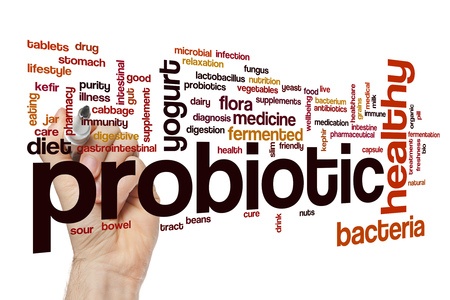
- Probiotics do not thrive that well in low acid fruit juices but a newly developed prebiotic nanofiber that partly encapsulates them protects them.
- A potential new method of delivering probiotics to the gut.
Probiotics are increasingly being viewed as a way of modifying the gut’s flora and fauna to improve general digestion and aid recovery from severe medicines and gastrointestinal diseases like gastroenteritis. There is also gathering evidence for their role in the improvement of gut inflammation and helping children tolerate notorious allergens like peanuts. The probiotic not only has to survive for as long as shelf-life permits in a beverage product, it must also remain intact and survive as it passes through the gut. The minimum recommended level needed to achieve a full health benefit from any probiotic is 106 CFU/ml at the moment of consumption (Champagne et al., 2005; Prado et al., 2008). Given current product development, dairy products have always been the best vehicle but it would be ideal to extend this to fruit juices as well because of their health connotations. Probiotics generally look to be the way forward in supplying health to the gut.
Encapsulation is a widely developed method for protecting a variety of ingredients including drugs, micro-organisms and other agents that would not normally survive. When you examine the encapsulants on offer, they have all been materials such as gums (carrageenan, pectin, alginate, various vegetable gums), fibres (cell resistant starch) and other materials, often waste ones like chitin and chitosan (Riaz and Masud, 2013; Foroutan et al., 2017).
To help protect probiotics in this instance, a new nanofiber has been developed in a collaboration by the Biotechnology Group in the Faculty of Chemical Engineering at the Tarbiat Modares University in Tehran, Iran, and the national Elites Foundation of Iran. These nanofibers were designed to help probiotics survive in acidic and low pH fruit juices and so extend their shelf-life in what is a relatively harsh environment.
The NanoFibre Used For Protecting The Probiotic
The nanofiber is a pectin-based bionanocomposite which contains nanochitin, nanolignocellulose and bacterial nanocellulose. It is safe to use and was demonstrated to protect a particular probiotic Bacillus coagulans.
A low-methoxyl pectin cross-linked with calcium ions served as the basis for this composite material. The composition was pectin-nanochitin-nanolignocellulose in a proportion 2:1:1 ratio and had a prebiotic score of 1.36. The cross-linking of the nanofiber helped to trap the bacteria within the matrix.
The nanofaibre matrix revealed under examination, a uniform, smooth slightly wrinkled morphology with no pores or cracking.
Study Approach
The study group compared the microencapsulated bacteria with the free cells. These were mixed into either peach juice (pH 3.6) or a dried symbiotic matrix (1% w/v). The latter material was designed to simulate typical conditions in the gut.
The bacteria’s survivability was monitored throughout the time course of the study. The pH of the two juices were analysed weekly intervals during storage at either 4 or 25 °C. The survival rate of the B. coagulans was monitored weekly too in both solutions.
Results
The entrapped bacteria showed roughly a 65% survival rate in the gastrointestinal-like environment. The maximum survivability of the encapsulated bacteria was about 68% and compared favourably to the 53% shown by the free cells after the 5 week period.
After 21 days storage, the survivability of the entrapped bacteria treated with sequential digestion was about 58% compared to the 45% shown by the free cells.
The nanocomposite did not appear to alter the properties of the peach juice which indicates that the integrity of the product is not compromised by any fermentation conducted by the growing probiotic. The nanofibers were insoluble too which meant the damage caused in the gastrointestinal environment was minimal if at all. It is thought the
Industrial Significance
Probiotics are readily damaged in acidic environments and developers are assessing methods to ensure quality is maintained throughout the shelf-life of the product containing them. Any material that protects probiotics wat the level shown in the study has commercial legs. Likewise, the added composites and the encapsulated bacteria must not alter the base such as the juice. Product changes occur anyway over shelf-life with Maillard browning and ingredient losses without additional issues created by the bacteria or a changing composite. This latter element seems to have been avoided in the study indicating the nanofiber deserves special attention as a food ingredient.
References
Champagne, C. P., Gardner, N. J., & Roy, D. (2005). Challenges in the addition of probiotic cultures to foods. Critical Reviews in Food Science and Nutrition. 45(1), pp. 61-84
Khorasani, A. C., & Shojaosadati, S. A. (2017). Improvement of Probiotic Survival in Fruit juice and under gastrointestinal conditions using Pectin-Nanochitin-Nanolignocellulose as a Novel Prebiotic Gastrointestinal-Resistant Matrix. Applied Food Biotechnology, 4(3), pp. 179-191. DOI: http://dx.doi.org/10.22037/afb.v4i3.17337
Prado, F. C., Parada, J. L., Pandey, A., & Soccol, C. R. (2008). Trends in non-dairy probiotic beverages. Food Research International, 41(2), pp. 111-123
Riaz, Q. U. A., & Masud, T. (2013). Recent trends and applications of encapsulating materials for probiotic stability. Critical Reviews in Food Science and Nutrition, 53(3), pp. 231-244
Leave a Reply